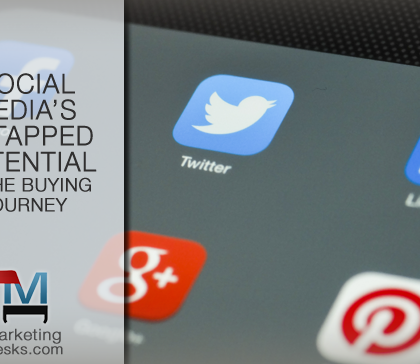What Does an Ideal Customer Experience Look Like, Anyway?
For years marketing experts have been harping on the importance of going from merely an acceptable to an ideal customer experience. Here’s what an ideal customer experience looks like.
Exceed Expectations by Going from Merely Acceptable to an Ideal Customer Experience
Marketing experts have been imploring business owners to improve the customer experience for years. In a crowded marketplace, in particular, an ideal customer experience might be the only way for an organization to successfully differentiate itself from the competition.
86% of buyers say they will pay more for a better customer experience. A Walker study titled, Customers 2020 predicts that “customer experience” will be THE key brand differentiator for B2B companies (business-to-business), overtaking both price and product by the year 2020. An ideal customer experience not only enables greater profits, it creates other important advantages as well:
- Improves customer retention
- Improves customer satisfaction
- Increases success in cross-selling and up-selling
- Lowers the cost of customer acquisition
- Reduces operating costs
(Source, Genesys Customer Experience Report)
In addition to putting yourself in the customer’s shoes and evaluating every customer touchpoint, you can also evaluate your business against these sixteen factors judged by more than 170 senior marketing leaders as those most important in creating an ideal customer experience.

Source: CMO Council and SAP Hybris study: Context, Commerce + Customer – Free Report Download
The 16 Components that Make Up an Ideal Customer Experience
75% – Fast response times to issues, needs or complaints
Often it’s not a problem, concern or question that brings on negative customer perceptions – it’s the lag time. Fast response time breeds trust and positive perceptions; it was far and away the factor judged as most important in the study.
55% – Consistency of experience across channels
No matter where the customer interacts with your brand or one of its representatives, the experience should “feel” the same. In an ideal customer experience, the customer can interact with the brand on the channels the channels they prefer and each will perform like a seamless extension of the brand.
52% – Knowledgeable staff ready to assist whenever and wherever the customer needs
Your prospects and buyers want to be able to self-serve – until they don’t. At the point in time where they need clarification, options or offers, they want to be able to get in touch with someone who has the answers, using the channel they prefer.
46% – Clear, consistent messaging and information across channels
The last thing you want is marketing or advertising verbiage that seems to tell two different stories. The more time you spend refining, testing, and improving your messaging, the more you will be able to communicate effectively and persuasively across all marketing channels.
37% – A person to speak with, regardless of time or location
Regardless of your industry or business model, at some point even in the most self-service-friendly buying journeys someone will want to ask questions, voice concerns or lodge a complaint. Ensuring that a “real person” is available to engage prospects and customers when needed can shorten the buying journey or prevent a negative experience.
28% – Multiple touch points that add value to the customer
Even in businesses with a short, straightforward buying journey, it’s possible for prospects and customers to interact with your brand on multiple channels before, during and after the sale. Consider some of the basic touch points where you might add value, based on consumer behavior when it comes to a typical brick-and-mortar shopping trip for fresh groceries (Nielsen.com):
- 38% looked up product information online
- 39% checked or compared prices
- 30% looked for deals, promotions or coupons
- 10% clicked and email ad to get more information
- 7% subscribed to store emails
- 8% liked, Tweeted or commented on a product or store on social media
Each of these touch points represents an opportunity for a brand to add value, show up in online search, differentiate itself from competitors, and communicate with prospects and customers effectively in order to win new sales.
26% – Readily available, multi-channel information
Today’s consumers can interact with brands in any number of ways. They expect to be able to access the information they’re looking for, reach out to representatives and complete transactions day or night – at the time most convenient for them. An ideal customer experience makes it possible for prospects and clients to interact with brands on their terms and time lines.
25% – Relevant communications, promotions, recommendations and products
In an ideal customer experience, the prospect won’t have to sift through a lot of information or options that don’t pertain to them. Communications, offers, promotions, and any number of brand interactions can be personalized, and increasingly so as the brand “learns” more about the prospect or customer based on their behavior over time.
23% – Fast, easy to use tools and service options
Technology can be a valuable component for creating engagement in the buying journey, not just in generating marketing metrics. In the study, marketers identified the top points of technology solutions impacts as:
- 42% – increased measurability and trackability of programs and campaigns
- 41% – increased engagements across the customer journey
- 25% – automated processes and campaigns for fast deployment
- 25% – connected the engagement dots
- 25% – accelerated the rate of engagement at lowered cost
21% – Rich, robust, value-added content to engage, enrich and excite
Videos, podcasts, webinars, interactive web pages, blog articles and other rich content can further enhance and differentiate the customer experience at every step of the buying cycle. This type of content transcends technical descriptions, features and benefits to set expectations, heighten anticipation, and facilitate personal connection between the brand and buyers
21% – Multiple on and offline channels of engagement
“If you build it they will come” but only if you build it everywhere your prospect is likely to look for you. The easier you make it for people to engage with your brand on any channel they prefer, the more trust they will have in your brand’s reliability, consistency and success.
19% – Recognition and view into the customers’ history with the brand at every touch point
Sometimes you want to go where everybody knows your name! Big data isn’t just for big brands. Consumers and business-to-business (B2B) buyers increasingly expect that a brand or its representatives will “remember” them and their preferences and buying history, regardless of the channel where the next engagement occurs.
17% – Opportunity to discover new products, solutions, or services
Based on a prospects behavior with your brand’s channels online or off, as well as your customers’ buying histories, it’s possible to tailor offers and even predict future behavior. Brands can increase customer confidence as well as sales by helping customers find the right things to buy, at the right time.
9% – Rewards for customer loyalty and longevity with a brand
Many brands put all of their rewards and best offers into customer acquisition, sometimes failing to recognize customer loyalty altogether. Brands that want long-term customers create marketing strategies with a long term view by including rewards and customer recognition tactics.
9% – Social communities and networks to connect with other fans or customers
An ideal customer experience often generates an inherent desire to belong, were buyers become “fans,” not just customers of the brand. When customers participate as part of an “insiders” club, earn personalized rewards, or engage in some other type of brand community, they are much more likely to feel proud of doing business with the company. It can organically enhance loyalty and retention efforts and generate immense word of mouth marketing.
4% – Always-on automated service options
Brands that have the equivalent of Amazon’s Dash button make it possible for customers to connect with their brand 24 hours a day, 7 days a week, 365 days a year. Technology-designed-right can prevent buyer frustration and ensure they get connected with the right person, department, solution, service or product as quickly and efficiently as possible.










Trackbacks & Pingbacks
[…] You might also like: What Does an Ideal Customer Experience Look Like, Anyway? […]
[…] You might also like: What Does an Ideal Customer Experience Look Like, Anyway? […]
[…] You might also like: What Does an Ideal Customer Experience Look Like, Anyway? […]
Leave a Reply
Want to join the discussion?Feel free to contribute!